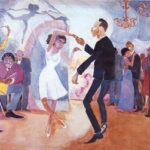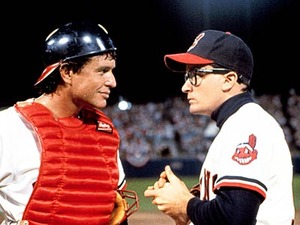African Americans have faced racism, prejudice attitudes, and discrimination in America for hundreds of years. First Black people were brought over as slaves and treated horribly by White people. After Black people were finally freed, they were then segregated from Whites until 1964 (Parrillo, 2011). Presently Black people still experience a great deal of racism in the United States. There are four main areas where African Americans encounter racism: job attainment, acceptance by other citizens, education, and poverty.
Black people experience job discrimination through institutional discrimination. As defined by Parrillo, 2011, “institutional discrimination is the unequal treatment of subordinate groups inherent in the ongoing operations of society’s institutions. Entrenched in customs, laws, and practices, these discriminatory patterns can exist in banking, criminal justice, employment, education, health care, housing and many other areas in the private and public sectors” (62). African Americans may not get a higher paying position simply due to the fact that they are black, and therefore labeled a certain way. Affirmative action took place in 1961 in attempt to produce equality in the workforce (Parrillo, 2011). However, employers still find opportunities to avoid hiring an African American based on “other factors.
Blacks also experience racism through acceptance by other American citizens, mainly Whites. Whites may make it harder for African Americans to participate and feel comfortable in the community. This in turn causes Blacks to regress into their own same race area. Through the Whites rejection of Blacks, it makes for a constant reminder for the Black community that they are unequal or different from Whites.
African Americans also have a harder time getting accepted into colleges or higher education institutions. This is mainly due to the fact that school systems in Black neighborhoods are a lower quality than those for Whites, making it harder for Blacks to get high scores on ACT’s and SAT’s. By not attaining higher education, it perpetuates Blacks into poverty. This is the fourth area of discrimination and ties into the other three areas of racism. Because of the job discrimination, acceptance issues and education, Blacks are more likely to live in poverty and continue the cycle of previous generations, as well as future generations of their children.
Other countries also demonstrate racist feelings towards African Americans. Russia, Germany, the United Kingdom, the Netherlands and China all exhibit racism towards Blacks (Akwani, 2006; Offenberg, 2009). Blacks in Russia are afraid to go out in public for fear of being attacked, if they do venture into public, they must know where to go and behave in a “white” way (Akwani, 2006). Akwani, 2006 states that there were “more than 15 people were killed in racially motivated attacks [in 2005] and a year before that there were 44 such slayings” (data Akwani collected from the Moscow Bureau of Human Rights). In Germany, the United Kingdom and the Netherlands, racism is running rampant towards Blacks. In the United Kingdom, a black teen was randomly killed with an ax to the head by white supremacists, while in the Netherlands Blacks are being stripped of their citizenship for trivial reasons, such as not completing a full record of previous employment (Akwani, 2006). In China, the darker your skin, the harder it will be to get acceptance from the Chinese. Many Blacks are stereotyped as drug dealers or human traffickers and avoided by the public (Offenberg).
The stereotypes associated with African Americans run abundant. Black people are labeled lazy, unintelligent, ghetto, criminal, cheating, highly sexual, poor and only good at sports. According to Parrillo, 2011, Blacks began to be labeled by their White slave masters as unintelligent and lazy. This was an attempt to keep Blacks at the bottom, so they would continue to get low paying jobs and keep Whites in power.
Nowadays, Blacks are portrayed by the media as criminals, ghetto and poor. Although the Black population is much lower than the White population, more Black men are shown on the news committing a criminal offense, than White men. This causes people to think of Blacks as more likely to commit crimes. However, Black men do have a higher rate of imprisonment, with “an estimated 7.9% of Black males compared to 0.7% of White males will enter State of Federal prison by the time they are age 20 and 21.4% of Black males versus 1.4% of White males will be incarcerated by age 30″ (Jones, 2000). These numbers may be due to the fact that more Black men are incarcerated for the same crimes that White men are pardoned for. It is also due to the fact that many of the men admitted into prison are for drug offenses; in fact 62% of Black men admitted to prison are due to drug offenses (Jones, 2000).
Poverty is also associated with Blacks and is a stereotype for Black women especially, i.e. Welfare Queen. Thirty-five percent of Black children live in poverty (National Poverty Center, 2006). These statistics can be related to other stereotypes associated with Black people such as highly sexualized and having many different partners.
The racism that Blacks experience results in lower economic conditions and a unique culture. The lower economic conditions are due to the fact that Blacks are not as readily hired by Whites based on the fact they are Black and the stereotypes that follow. African Americans are also exploited by Whites on the following basis: Because Blacks cannot get a job as easily, they are more willing to take on jobs that White people would not want, which are usually lower end; they are therefore paid less than a White person would get paid, because it is the only job they can get. Blacks’ culture is also different from Whites; they may act differently when Whites are around but feel more comfortable when it is solely Blacks in their group. Whites are less accepting of Blacks because of the language differences and culture differences.
Racism is real and is not a construct for exerting power against a perceived enemy. Types of racism will fade in and out and will be replaced by other types of racism. An example is the removal of the Jim Crow laws, which were replaced with institutional racism, institutional discrimination and rejection, which allows lighter races to gain power against Blacks. As World Science states ” The emotions surrounding the debate [between racism vs. construct] arise from its origins in the civil rights struggles of the 1960s, which led to widespread efforts to wipe out racism from society. Recognizing the evils that racial classification had created, from slavery to genocides, many tried to fight racism by playing down racial differences as much as possible” (World Science, 2005). However, several studies have proved the construct theory wrong. Race does exist (World Science, 2005).
References
Akwani, Obi (2006). “Racism against Blacks is a Growing Trend in Europe.” Global News Digest. http://www.imdiversity.com/villages/global/civil_human_equal_rights/RacismagainstBlacksinEurope.asp
National Poverty Center (2006). “Poverty in the United States; Frequently Asked Questions.” http://www.npc.umich.edu/poverty/
Offenberg, Willem (2009). “Everyday Racism in China.” Radio Netherlands Worldwide. http://static.rnw.nl/migratie/www.radionetherlands.nl/currentaffairs/region/asiapacific/090318-China-racism-redirected
Parrillo, Vincent N. 2011. Strangers to These Shores. (10th Ed.) William Paterson University, Allyn & Bacon Publishing.
R. Jeneen Jones (2000). “The Truth About Black Crime.” http://www.peace.ca/truthaboutblackcrime.htm
World Science (2005). ” Studies Contradict View that Race Doesn’t Exist.” http://www.world-science.net/exclusives/050128_racefrm.htm



